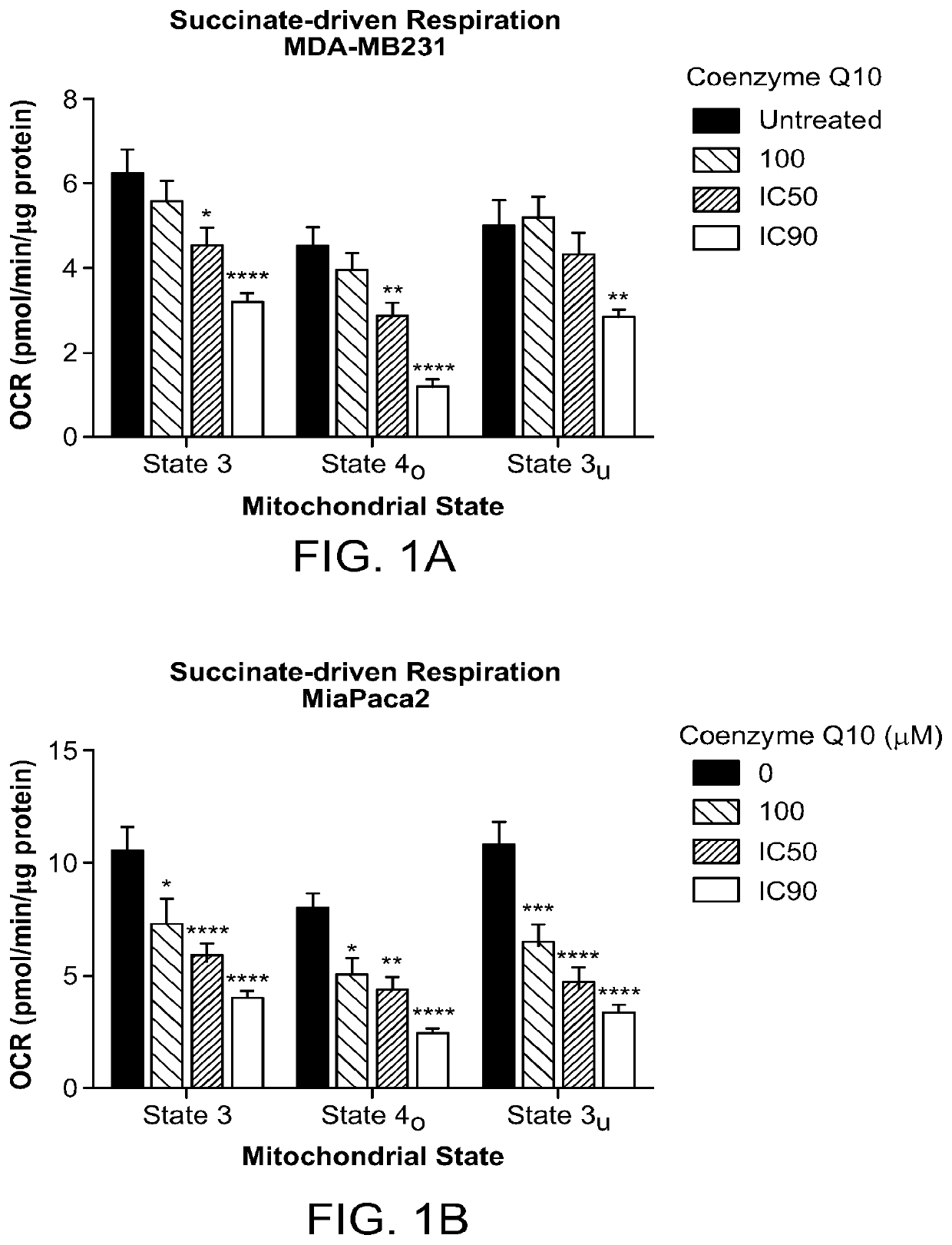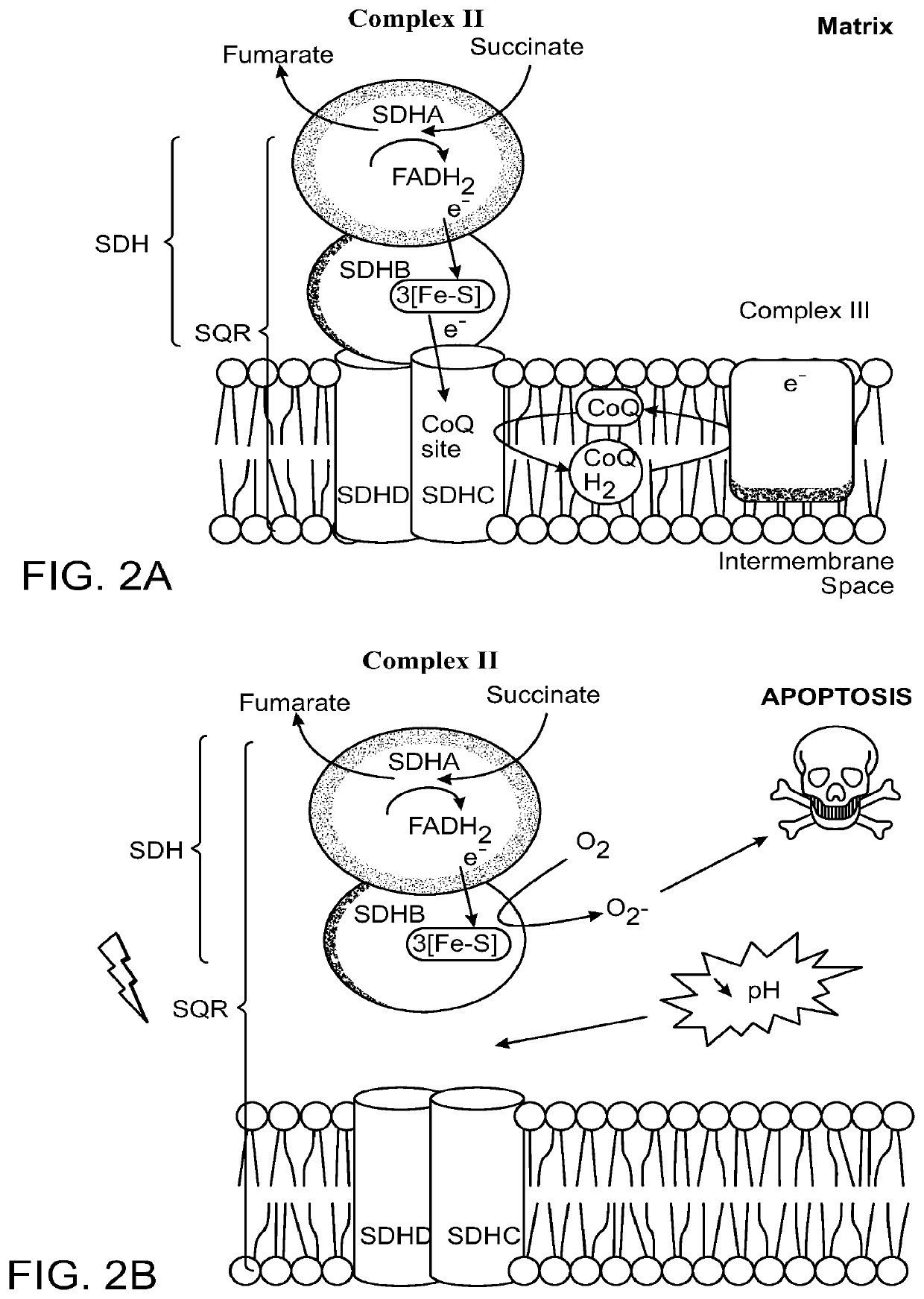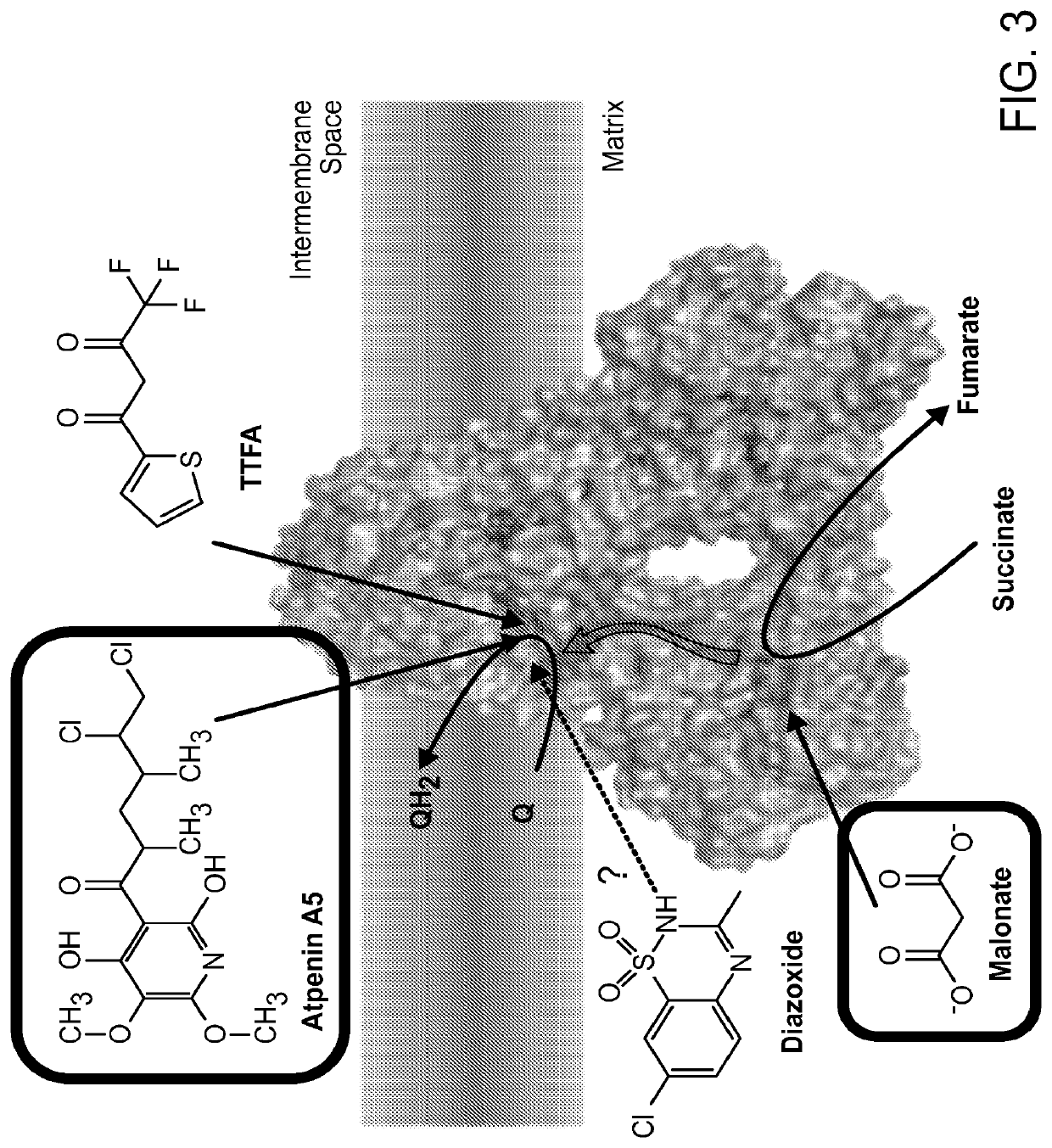Methods of treatment of temozolomide-resistant glioma using coenzyme q10
a technology of coenzyme q10 and temozolomide, which is applied in the direction of antibody medical ingredients, drug compositions, peptides, etc., can solve the problems of poor prognosis and short response of patients with high-grade gliomas
- Summary
- Abstract
- Description
- Claims
- Application Information
AI Technical Summary
Benefits of technology
Problems solved by technology
Method used
Image
Examples
example 1
t of Mitochondrial Function in MDA-MB231 and MIA PaCa-2 Cell Lines Treated with Coenzyme Q10
[0230]Oxygen consumption rate (OCR) was measured during various states of succinate-fueled mitochondrial respiration in the triple-negative breast cancer cell line MDA-MB231 and the mutant K-Ras-driven pancreatic cancer cell line MIA PaCa-2 treated with different concentrations of Coenzyme Q10. MDA-MB231 and MIA PaCa-2 have been previously found to be two of the most Coenzyme Q10 sensitive cell lines, with IC50 values for Coenzyme Q10 of 155 and 137 μM, respectively, and IC90 values of 310 and 274 μM, respectively. The assays were performed in permeabilized adherent cells using the Seahorse XF96 Analyzer. Cells were permeabilized with XF PMP reagent and put into mitochondrial State 3 by replacing the growth media with Mitochondrial Assay Solution (containing mannitol, sucrose, KH2PO4, MgCl2, HEPES, and EGTA) supplemented with succinate, rotenone (to block reverse electron transfer back to Com...
example 2
f Coenzyme Q10 on Mitochondrial Respiratory Chain Complex II in MDA-MB231 Breast Cancer Cells
[0231]Succinate is a substrate for Complex II of the mitochondrial electron transport chain, the function of which is to catalyze the conversion of succinate to fumarate while in concert oxidizing FAD to FADH2. The electrons from FAD are then passed through Complexes II, III (by way of the Q pool), and IV, and finally to oxygen. Complex II has a well-defined role in activation and propagation of cell death signals. This is thought to result from enhanced reactive oxygen species production when electrons leak from Complex II during apoptosis. For example, Complex II disintegrates during apoptosis, which leads to the specific release of the succinate dehydrogenase (SDH) A / SDHB subcomplex into the matrix in response to a pH drop. This dissociation uncouples its two enzymatic activities (SDH and succinate coenzyme Q oxidoreductase (SQR) activities) for superoxide (02) production and subsequent a...
example 3
f Coenzyme Q10 on Temozolomide-Resistant and Temozolomide-Sensitive Glioblastoma Cell Lines In Vitro
[0239]Significant and consistent electron transport chain remodeling has been shown in temozolomide (TMZ)-resistant glioblastoma using in vitro models of TMZ chemo-resistance, paired tumor biopsies, and patient derived TMZ-sensitive and TMZ-resistant xenograft cell lines. See Oliva et al., 2010, J Biol. Chem. 285(51): 39759-39767, which is incorporated by reference herein in its entirety. For example, Oliva et al. demonstrated decreases in Complex I and V activity and increases in Complex II, III and IV activity in TMZ-resistant glioblastomas (GB). Based on these studies, it is clear that mitochondrial function in treatment naïve GB is quite different than that of TMZ refractory tumors. Moreover, TMZ refractory GB appears to be more reliant on Complex II-driven respiration. Taking into consideration the in vitro results described above obtained in other metabolically active cancer cel...
PUM
| Property | Measurement | Unit |
|---|---|---|
| size | aaaaa | aaaaa |
| time | aaaaa | aaaaa |
| time | aaaaa | aaaaa |
Abstract
Description
Claims
Application Information
 Login to View More
Login to View More - R&D
- Intellectual Property
- Life Sciences
- Materials
- Tech Scout
- Unparalleled Data Quality
- Higher Quality Content
- 60% Fewer Hallucinations
Browse by: Latest US Patents, China's latest patents, Technical Efficacy Thesaurus, Application Domain, Technology Topic, Popular Technical Reports.
© 2025 PatSnap. All rights reserved.Legal|Privacy policy|Modern Slavery Act Transparency Statement|Sitemap|About US| Contact US: help@patsnap.com



